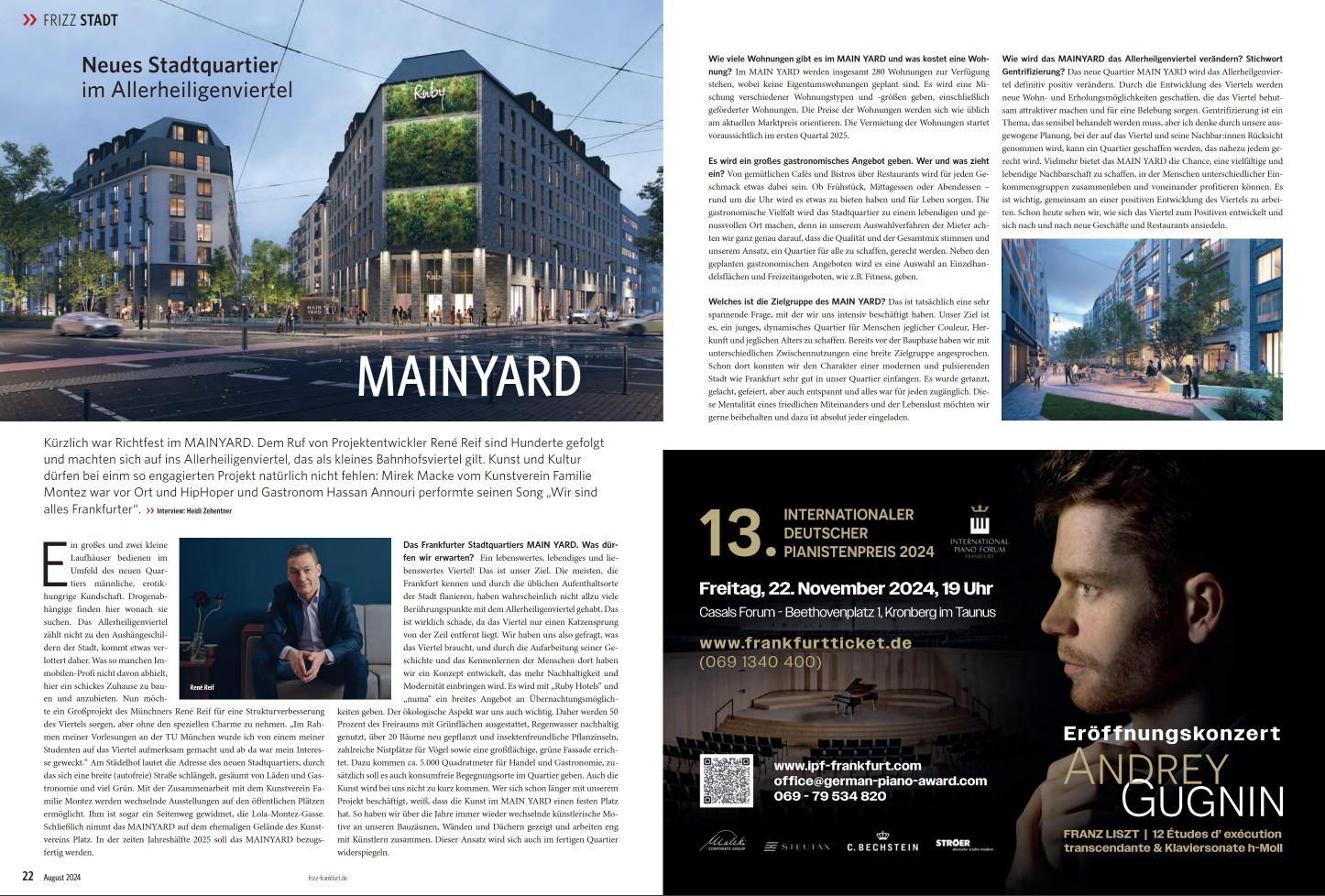Heidi Zehentner conducted an interview with project developer René Reif about the concept and aims of MAIN YARD for the journal Frizz, which is well worth reading. The proven expert and lecturer in the structuring of financing for large property projects reveals his deep understanding of the importance of building and architecture for the development of a city and the people who live there…
The ambitious goals of the neighbourhood development are, so much can now be said, covered by the project facts. The interview once again demonstrates the OrT Group’s responsible and prudent approach. Reif acknowledges the associated hopes for urban development. He explains that the OrT Group asked itself from the outset ‘what the neighbourhood needs. And by analysing its history and getting to know the people there, we have developed a concept that will bring more sustainability and modernity.’
What René Reif and the OrT Group understand by modernity becomes clear in the course of the conversation: ‘… a young, dynamic neighbourhood for people of all colours, origins and ages’. The OrT Group is consciously investing in a new sequence of urban development, in a diverse urban society, in integrated urban functions and in tolerance for different lifestyles: ‘Even before the construction phase, we addressed a broad target group with various interim uses. Even there, we were able to capture the character of a modern and vibrant city like Frankfurt very well in our neighbourhood. People danced, laughed, celebrated, but also relaxed, and everything was accessible to everyone. We would like to maintain this mentality of peaceful coexistence and joie de vivre …’ Art and culture should therefore retain their permanent place in the MAIN YARD. Another aspect is the MAIN YARD’s work towards the ecological transformation of the city. As much as 50 per cent of the open space has been allocated to green areas, for example 20 new trees, insect-friendly plant islands and nesting places for birds.
We realise that the MAIN YARD is already becoming the buzz of the city a year before completion. It has not gone unnoticed how the former problem neighbourhood is being transformed into a new urban location, which, with its centrepiece, the traffic-free new street Am Städelshof (‘Grüne Gasse’), sets an example of how Frankfurt could develop from the city centre to outlying districts such as Fechenheim or Hoechst.
